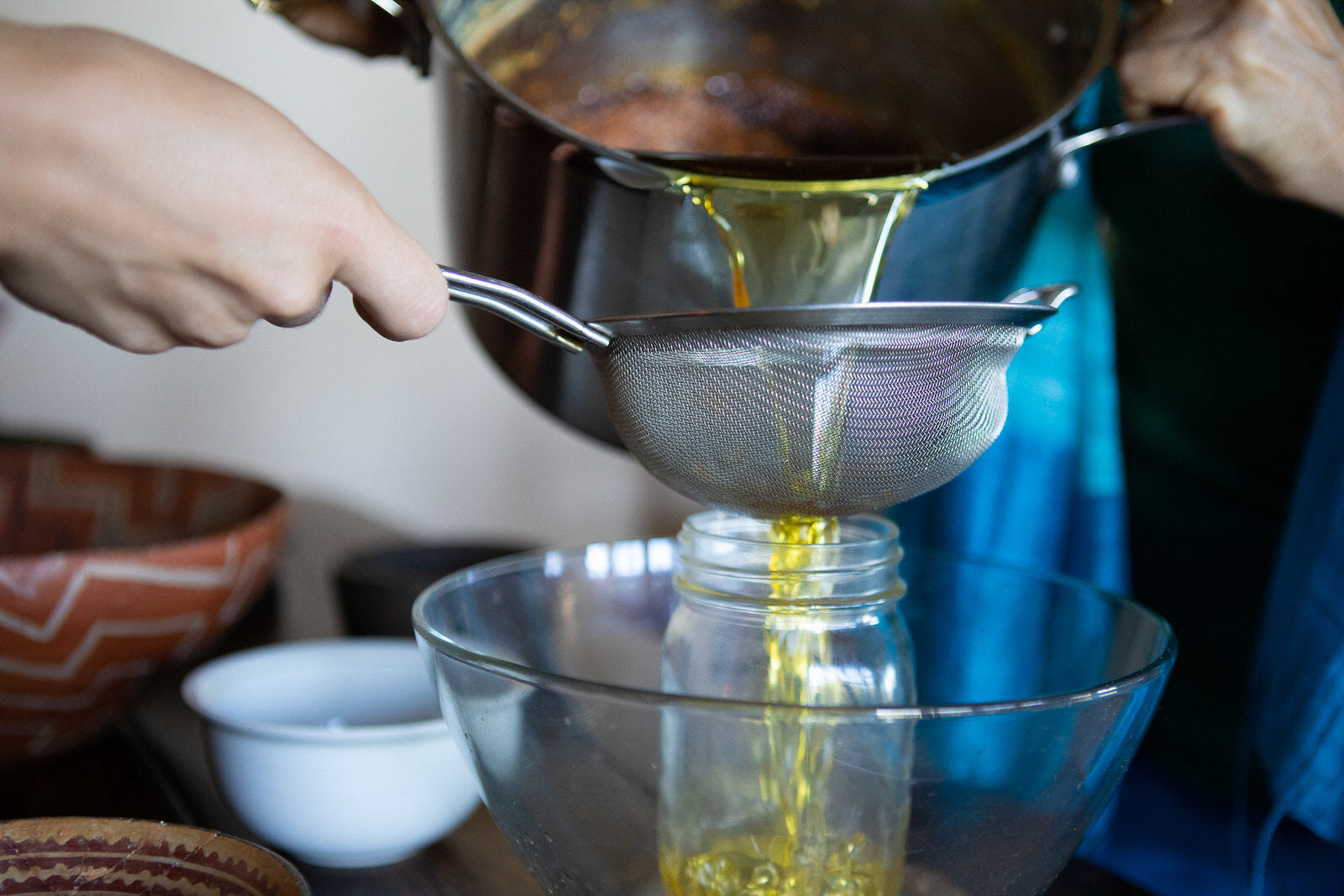
Ghee is an ancient and sattvic food, highly recommended in Ayurveda for its nourishing qualities and ability to bring the nutrients of food and herbs deeper into your tissues. Ghee is ideal for cooking, as it does not burn unless heated excessively, and health enhancing ghrta, which is medicinal ghee. Ghee is tri-doshic, meaning it is healing for all doshas (though people with excess kapha should use small amounts) and is not congestive like butter.
We love ghee for its taste – it has a rich taste, like a cousin of butter – and its balancing qualities. Here are just a few of the benefits:
-
Enhances digestive fire.
-
Pacifies vata and pitta doshas.
-
Improves the complexion of the face and body.
-
Increases physical and mental stamina.
-
Increases longevity.
-
Nurtures and cleanses blood tissue.
-
Soothes the nerves.
-
Lubricates the joints.
Although you may find ghee at your local health food or Indian store, it is more rewarding, better tasting and less expensive to make at home. Store it at room temperature, out of direct sunlight. Just use a clean, dry utensil to serve it (water or foreign particles in the ghee will result in mold).
Here’s a simple recipe to make your own ghee, plus a video so you can see the process from start to finish. We recommend making ghee while the moon is waxing or full. The moon's soma, or healing energy, is highest during these times and will be present in your ghee.
Recipe for homemade ghee
You’ll need:
1 lb. organic, unsalted butter (be sure to use organic butter, as the quality of a cow’s life will greatly affect the quality of your ghee)
1 clean, dry glass pint jar with a lid
1 stainless steel or glass saucepan
1 stainless steel fine mesh strainer or cheesecloth
Here’s how:
Place butter in a stainless steel or glass saucepan (avoid non-stick or aluminum). Melt the butter over medium-low heat and bring to a simmer. It will pop and speak to you. Turn down the heat to low and respond with a blessing of gratitude or mantra.
Let it simmer uncovered while you stay in the area, but no need to touch or stir it. Adjust the heat so that the popping continues but is not splashing out of the pan. Lower is often better here until you get a sense of how your stove responds.
The ghee is ready when the popping stops and with residue on the bottom of the pan (the length of time varies from 15 minutes to two hours, depending on the quantity of butter, the food the cows ate, your pot, stove and weather conditions – each experience is similar but unique). Remove it from the heat immediately or it will burn.
Let it sit for 10-15 minutes before straining it through unbleached cheesecloth or a fine colander into a clean, dry canning jar. Use your ghee just like you would butter.
Note: This recipe is for one pint but you can easily create several batches at a time. We are known to make as many as 30 jars at once. It stores wonderfully when you keep it in a cupboard away from the sun.
Visit our Ayurveda Lifestyle page for kitchen essentials
